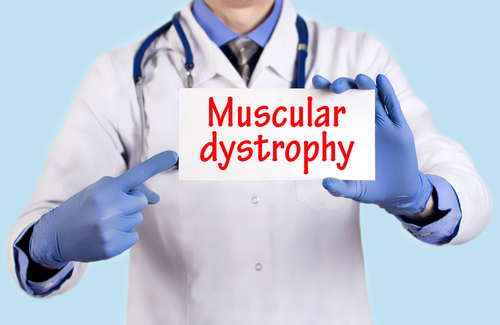Road to Better Muscular Dystrophy Treatment Possible with Discovery of New Muscle Repair Pathway

Researchers at the University of Missouri and their colleagues at Carnegie Institution for Science recently identified the pathway of a key gene that regulates muscle fiber production, influences muscle stem cell pool size, and leads to accelerated muscle repair.
The study, “Myofiber-specific TEAD1 overexpression drives satellite cell hyperplasia and counters pathological effects of dystrophin deficiency,” was published in eLife. The discovery, made using a mouse model, could steer research toward better treatments for muscular dystrophy (MD).
MD is characterized by gradual degeneration and weakness of skeletal muscle caused by a lack of proteins that are associated with cell membranes in the muscle. The protein deficiency is linked to a genetic mutation.
Tissue repair is generally attributed to reserves of tissue-specific stem cells (satellite cells) that go from a dormant state to an active state when an injury occurs, launching the natural repair and regeneration processes.
In a press release, Christoph Lepper, lead author at Carnegie Institution for Science, explained that satellite cells make up 5 to 7 percent of muscle cells that are essential to muscle regeneration. When a mouse is born, its satellite cells divide and differentiate for three to four weeks as tissues grow.
“They then go quiet (dormant) until an injury is detected. The number of satellite cells set aside at this time appears to be relatively constant with regard to the host muscle tissue size. We wanted to see whether this ratio could be manipulated and, if so, whether there would be any physiological consequences,” Lepper said in the release.
Using mice previously altered with over-expressed TEAD1 genes, which affect the type of muscle fiber production, the researchers documented that the mice showed up to six times more satellite cells, increasing the stem cell pool size. The result was due to the molecular communication that occurred between the muscle fiber and stem cells across all muscle groups tested. It stimulated the pool cells to increase in numbers in order to repair the injury without impacting the actual size of the muscle tissue.
“We were very surprised to find that it was possible to uncouple the number of stem cells from the host tissue size without seeing negative consequences to muscle physiology,” Sheryl Southard, co-lead author of the paper said.
Other tests performed on mice with Duchenne muscular dystrophy indicated that increased numbers of stem cells can hinder muscle weakening and degeneration, suggesting that a fighting process against muscular dystrophy in humans is possible.






